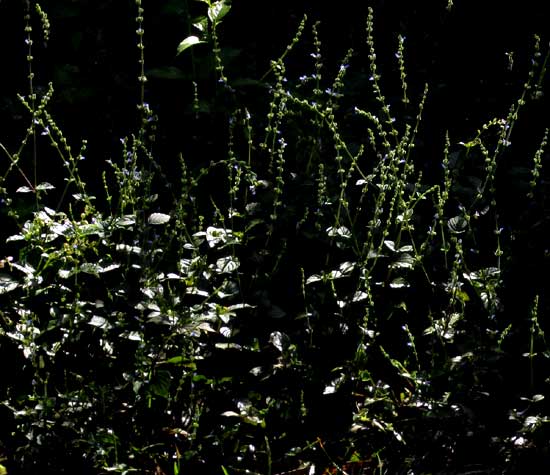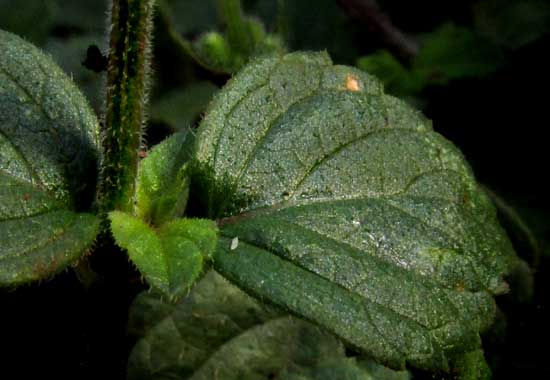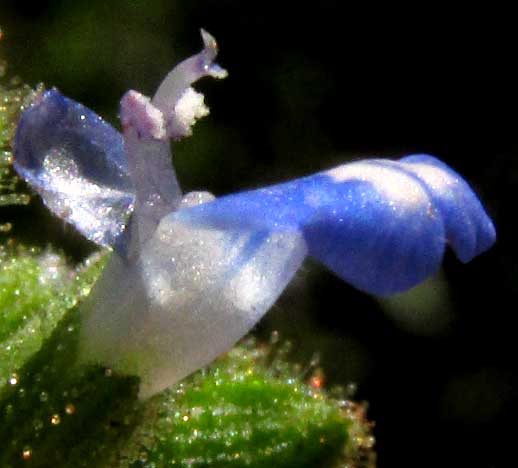Excerpts from Jim Conrad's
Naturalist Newsletter
from the February 11, 2018 Newsletter issued from Rancho Regenesis in the woods ±4kms west of Ek Balam Ruins; elevation ~40m (~130 ft), N20.876°, W88.170°; north-central Yucatán, MÉXICO
TROPICAL SAGE
Along partially shaded pathways and trails, exactly at the edge of dirt kept bare by passing feet, very often a certain scraggly looking herb with ankle- to knee-reaching spikes of widely spaced, tiny, blue flowers appear, sometimes abundantly. When shrill morning sunlight cuts in from the side, these pathside plants look like what's shown below:

Up closer you see that the herbs display certain features of the Mint Family, as seen below:

Moreover, though the herbage isn't particularly fragrant, the herbs' stems are squared in cross section as they should be in the Mint Family, and the plants' opposite leaves are toothed along their margins like Spearmint, as shown below:

Up close, the flowers also look typical of the Mint Family, their corollas with their bilateral symmetry shaped like little dog heads, as seen below:

By this time we're pretty sure we have a member of the Mint Family, the Lamiaceae, and when the corolla's top lip is peeled back to display the stamen arrangement, not only is the Mint Family more or less confirmed, but also it's realized that often we've seen this stamen arrangement on an important genus in the Mint Family, as seen below:

Two stamens hug the fork-tipped style as it arcs up beneath the corolla's down-curving top lip, the stamens' filaments structured so that in-coming pollinators push a kind of "lever" causing the stamens' pollen-laden anthers to bend down and daub the pollinator's rear end with pollen. In the above picture you can barely see the nearest filament developing some kind of "lever" just before it disappears into the corolla's tube.
The configuration speaks of a species of sage, genus Salvia, though this is the smallest-flowered sage I've ever seen. It's SALVIA MISELLA, in some publications mentioned as Salvia riparia, in English known variously as Tropical Sage, Florida Keys Sage, and Southern River Sage. The two latter names are mostly used in Florida, where it appears in the state's southern half. The species also occurs on islands in the Caribbean, throughout Mexico, and south to Venezuela and Peru.
In our environment, Tropical Sage's main job seems to be to occupy and protect from further erosion much-abused soil, but I read that in Florida it's valued as an attractive ground cover in semi-shaded locations. It's stated that it flowers throughout most of the year, though here I've not seen it putting on a show until right now.